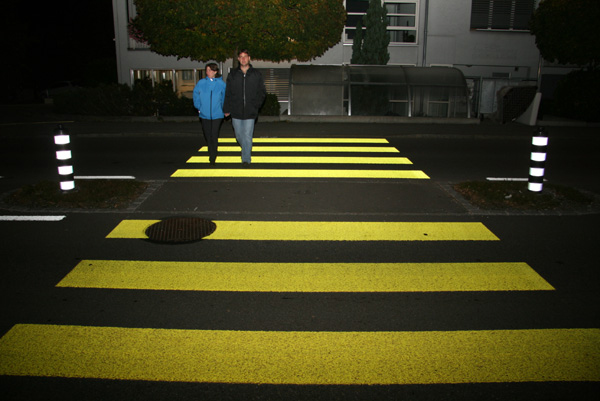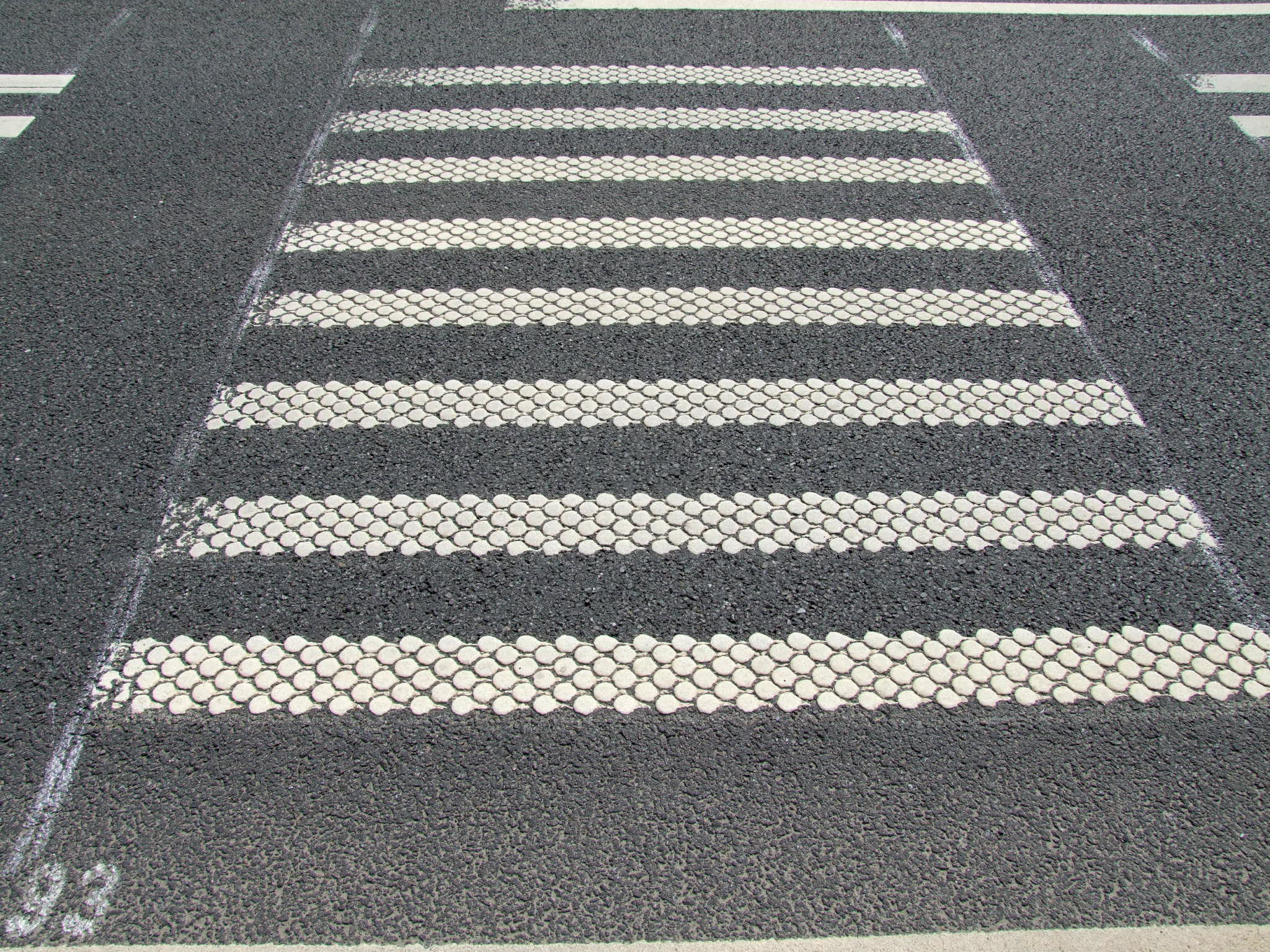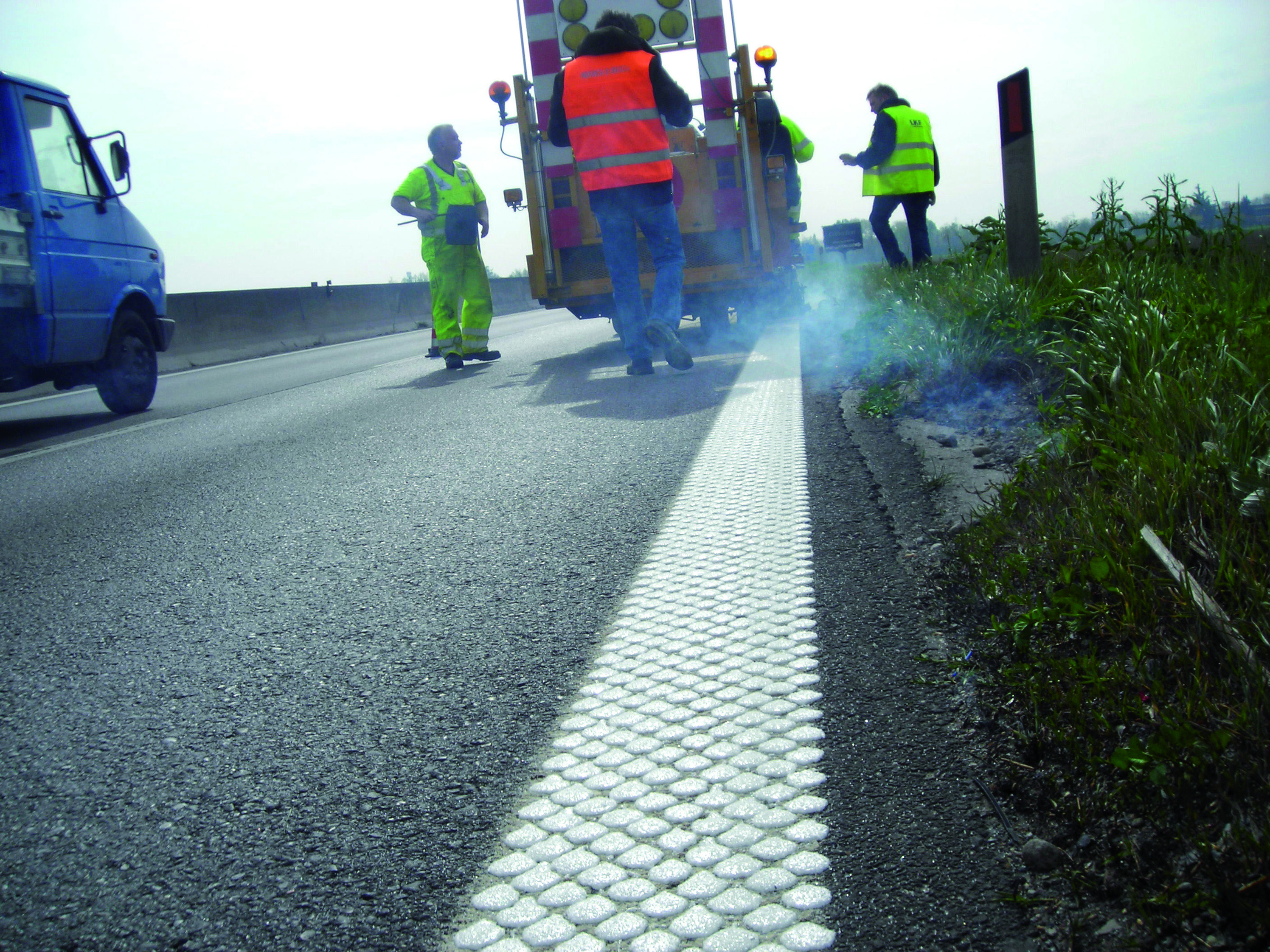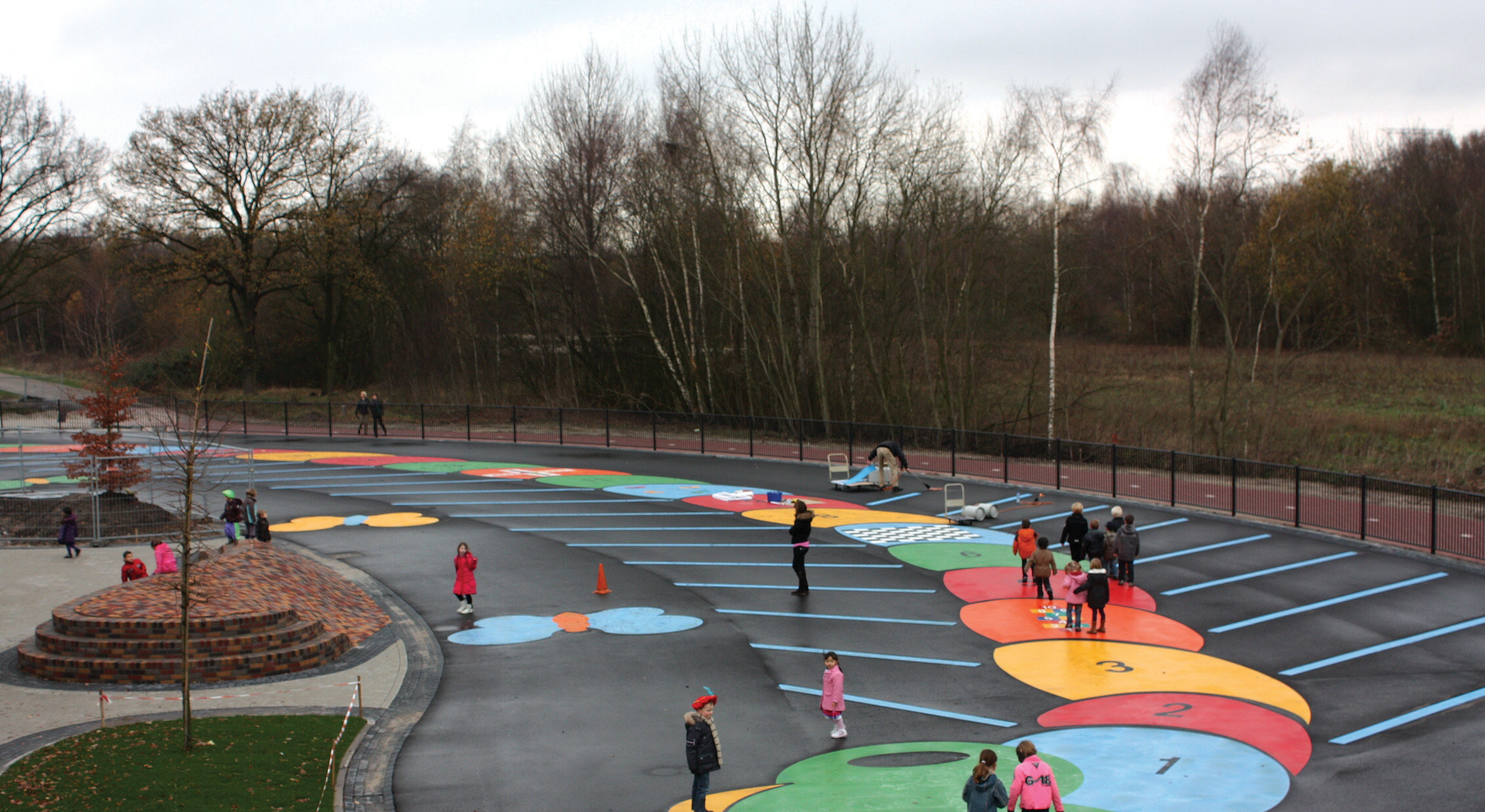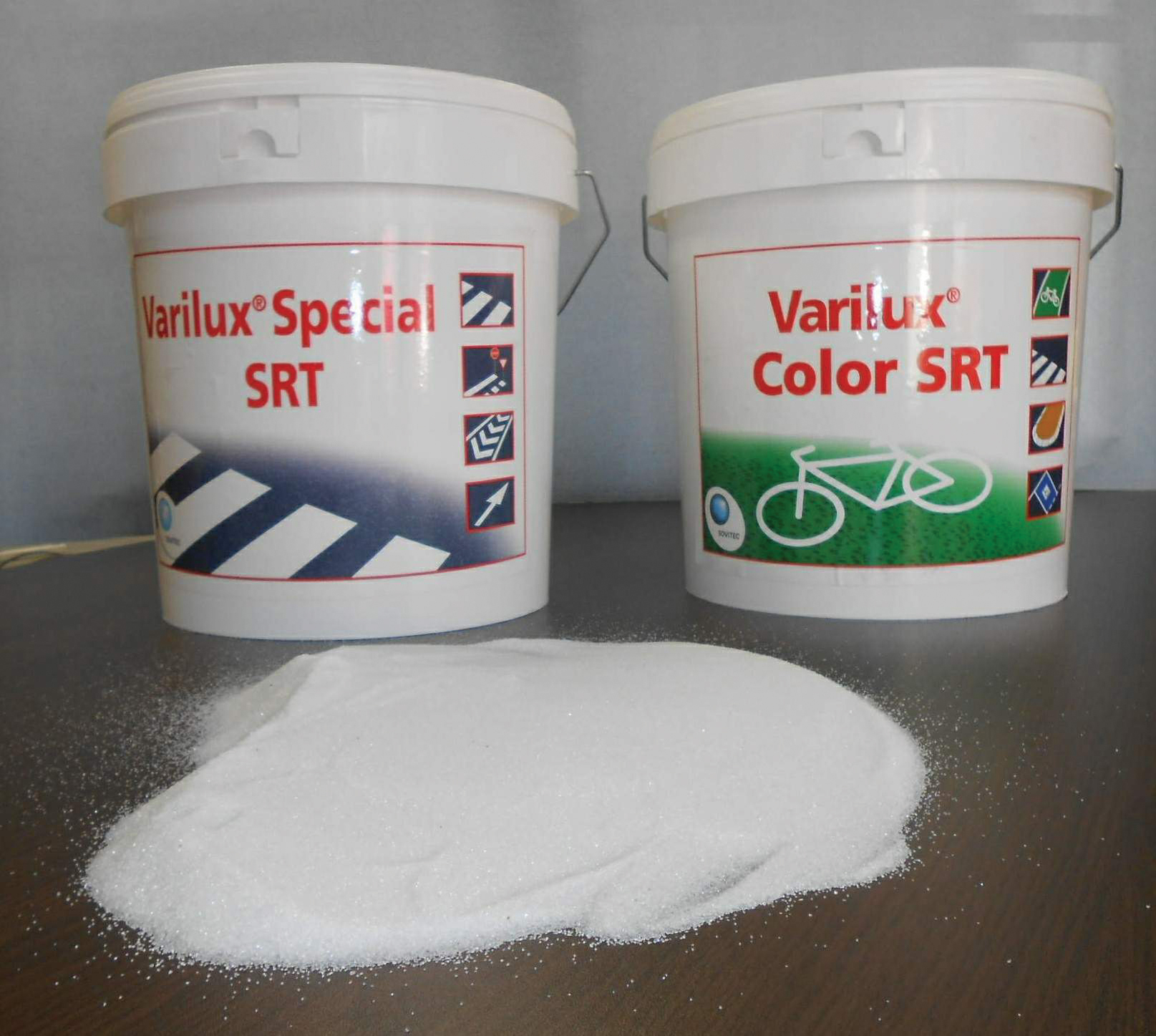Research into driver behaviour has identified that driver safety and decision-making can be positively influenced by clearer and higher performing road markings. Patrick Smith reports. Bare roads will lead to total vehicular confusion. Markings are painted on the road to direct, guide and regulate the road user, and include all lines patterns, words and colours applied on or attached to the road surface or kerb for these purposes.
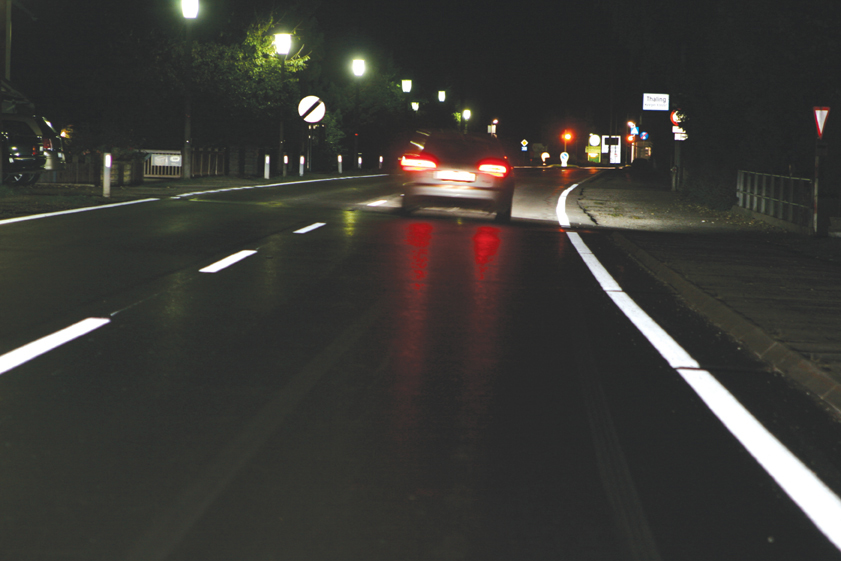
Swarco says its No.1 Beads SolidPlus improves safety in lit and in particular unlit tunnels.
Research into driver behaviour has identified that driver safety and decision-making can be positively influenced by clearer and higher performing road markings. Patrick Smith reports.
Bare roads will lead to total vehicular confusion. Markings are painted on the road to direct, guide and regulate the road user, and include all lines patterns, words and colours applied on or attached to the road surface or kerb for these purposes.This is the view of the Delhi Traffic Police in India but it could just as well apply to almost any road anywhere in the world. It has been put forward on numerous occasions and by different companies and organisations.
Bare roads and roads with bad markings do lead to motoring confusion and in many instances to serious accidents, particularly in the wet and at night.
European Union-sponsored practical research and investigation into driver behaviour, in a range of environments, has identified that driver safety and driver decision-making can be positively influenced by clearer and higher performing road markings, says Prismo (part of Ennis Paint). Based on accident statistics, however, there is a growing realisation that the most significant impact on road safety is through the improvement of wet night visibility of road markings.
This is why manufacturers of road marking, laying and testing materials are constantly refining, developing and upgrading their products to meet new standards and specifications. Such topics will be discussed by experts from road marking companies at the Technology Day being held for the tenth time at the Rellingen, Germany, site of road marking machinery manufacturer
Meanwhile, Austrian company
Coming directly from the glass melt, SolidPlus are special Type A reflective glass beads offering high retroreflectivity (the ability to return most of the light back to its originating light source) and long term durability.
With multi-faceted uses, the beads are appropriate for solvent-based, waterborne paints, for two-component spray plastics or structured road marking systems, says Swarco. They achieve retroreflection values of 500 to 1,000 mcd/lx/m² [the terms for measuring light] in dry conditions and up to 200 mcd/lx/m² in wet conditions, which is when most accidents happen.
The company's plus9beads, also used on highways, were also specially developed for the high demands of runways and helicopter landing zones to assure high visibility for the markings even in the case of steep approach angles, and provide the best possible retroreflection in conditions where visibility is poor as it is with rain and fog.
The plus9beads have a refractive index of 1.9 and a size gradation of 300 to 850 microns. In combination with high-quality marking materials, retroreflectivity readings of 800-1,500 mcd/lx/m² can be reached.
Prismo says that types of marking employed to give wet night visibility include profiled markings; flat lines extruded with large diameter glass beads or flat lines extruded with cluster beads (high index), used primarily with a two-component methyl methacrylate (MMA).
Its new type 2 wet night visibility marking material, Crystalex 300 WN, and its new application equipment, involves a range of two-component MMAs and thermoplastics for both agglomerate markings and flat lines.
"The intention is to provide enhanced safety features, reduced accident levels and fatalities on the entire European road network," says Prismo.
Crystalex 300 WN resin polymer involves carefully selected sieve grading of solid glass beads for intermixing and also specially coated solid glass beads to enhance the adhesion properties to reduce bead loss during its functional life, for drop-on application.
The marking is being trialled in Denmark and is soon to be trialled in the UK, and Prismo points out that installed markings can be monitored via ECODYN (a vehicle mounted retroreflectometer vehicle).
In Italy, PREMARK Anti-Skid from Danish company
The surface material of PREMARK Anti-Skid contains a high density of transparent glass grains (tumbled to avoid sharp cutting edges), and the thermoplastic material is formulated so the glass grains get a good embedment during application.
"The initial skid resistance is high without a need to post-sprinkle any skid material," says LKF.
Segnalerho marked the station stairs with black PREMARK Anti-Skid lines to make them non-slippery and thus safer for the pedestrians, while the use of Viaxi Primer secured a good bonding between the high friction thermoplastic material and the surface of the stone stairs.
The flexible thermoplastic material can easily be cut and adapted to different sizes and shapes and application of the high friction road marking material is fast (it requires a gas burner, a broom and a man to do the work).
US company POLY-CARB's system, DNV, is a contrast marking system that provides multiple coloured contrast marking.
In essence, DNV relies on three colours: substrate (the colour of concrete or asphalt), a black base layer for distinguishing visual appearance, and the top white or yellow layer containing glass for retroreflectivity for guidance.
"By adding a deep black before and around where the white or yellow pavement marking will go provides the added benefit of distinguishing the line from the lighter coloured asphalt or concrete surface," says POLY-CARB.
States including Missouri, Oklahoma, and Kansas are using POLY-CARB's contrast markings system as a way to improve the visibility of pavement markings by incorporating the black marking to more easily distinguish or see the white marking. Kansas has also taken a proactive approach by being the first state to utilise contrast yellow edge lines, to help guide drivers back onto the road and avoid lane departures.
Smart move
Late last year Grant Bowerman of Traffic Control Corp was contacted by Theresa Rohlfs, traffic studies specialist of Missouri DOT in the US to help it work out a way to create better driver visibility at the I-670 and I-35 split in Kansas City.The area had a tunnel-like appearance to drivers and was especially dark during the day (most drivers did not use headlights on) and some drivers hesitated on which way to go, narrowly missing the crash barrier, or worse, sometimes hitting it.
"The solution was to install a long narrow V-shape of inductively powered SmartStud's in the area of the I-35 exit on westbound I-670 in downtown Kansas City," said Theresa Rohlfs.
As part of the solution, 15 SmartStud units were installed in snow-ploughable slots along the pavement marking in the area and the exit sign in the area was replaced with an internally lit LED sign.
SmartStud is a road marker guidance system that is highly visible whatever the weather or road conditions. Each SmartStud consists of ten or 20 high-intensity LEDs, and in the sun, dark, fog or rain they are visible from up to 500m away.
"Even though it is too early to do much of a comparison, I am very pleased with the results," said Rohlfs.
Tim Crabtree who heads the SmartStud international sales team, said: "We are seeing an increasing number of these types of installations as authorities realise the clear benefits of investing in powered delineation for 24-hour enhancement of dangerous sites."



